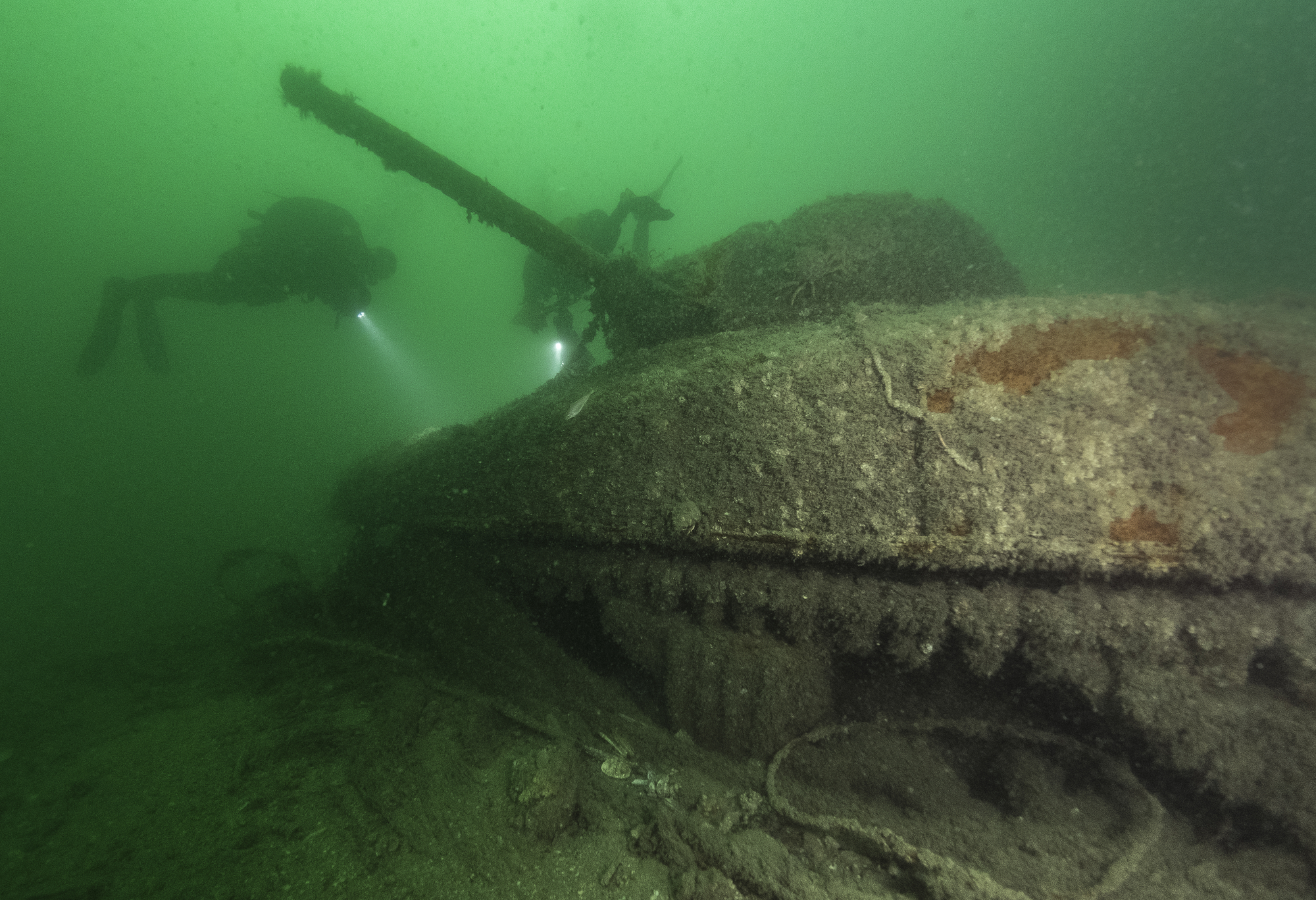
- Home
- Immersion on the wrecks of the Normandy landings
- Safeguarding the landing operations
Often overlooked, minesweepers and buoy tenders played an essential role in the successful execution of the D-Day landings.
A vital protective mission
Divided into convoys, the units landing on the beaches were assigned one of ten channels cleared by minesweepers and marked by lighted buoys. Minesweepers were deployed extensively; the Eastern Task Force possessed 129 and the Western Task Force had 118 vessels. They were accompanied by 43 buoy tenders. By day, the minesweepers cleared the channels, and by night, they protected the rear lines.
MMS 8, the “coffin” minesweeper
The majority of these units were British, such as the MMS 8 which played the tragic role of “coffin ship” during Operation Neptune, recovering the bodies of soldiers killed during the attacks. The Motor Minesweepers (MMS) were among the first wooden-hulled minesweepers, designed to resist magnetic mines. On 26 June 1944, one of the lead minesweepers in this convoy struck a delayed-action mine which exploded just as MMS 8 passed by. It sank within minutes, leaving only two survivors. The location of this wreck, whose explosion left only a mass of debris that was difficult to identify, was confirmed during salvage operations by the discovery of a bell bearing the ship’s name.
American oceangoing minesweepers
Of the minesweepers mobilised for the Normandy landings, 25 were American. This was the case for the USSs Tide, Magic, Cato and Pylades, Auk class oceangoing minesweepers commissioned in May 1943. On 5 June 1944, the Tide participated in demining operations in the Utah Beach area. During the night of the 6th-7th, it patrolled the Baie de Carentan to prevent submarine attacks. The morning of the 7th, heading towards the Banc du Cardonnet, it struck a mine with its stern. The USS Swift tried to tow it, but it broke in two and sank. The survivors were rescued by the Threat and the Pheasant. Today, all that remains of the Tide, heavily scrapped after the war, is some debris spread over about fifteen metres.
The Magic, Cato and Pylades were transferred to the Royal Navy in late 1943. The Magic was struck by manned torpedoes on 6 July 1944, leading to the loss of 26 men. The Cato, which came to collect the survivors, sank under the same conditions, leaving 13 dead. Two days later, the Pylades suffered the same fate, but 73 of its 82 crew members were rescued by the HMS Southern Prince. Three wrecks in the Baie de Seine have long been assumed to be the Magic, Cato and Pylades. At each site, divers can still recognise the towing cables of the sweep, as well as the wires of the immunisation circuit used to reduce the magnetic signature of the ship. Under the hull of the presumed Pylades, an ASDIC can also be seen.
Partners and authors
Associated media
Open Media Library
Multibeam echo sounder survey

Ship’s bell from the minesweeper MMS 8

The USS Tide sinking off Utah Beach after striking a mine, 7 June 1944

